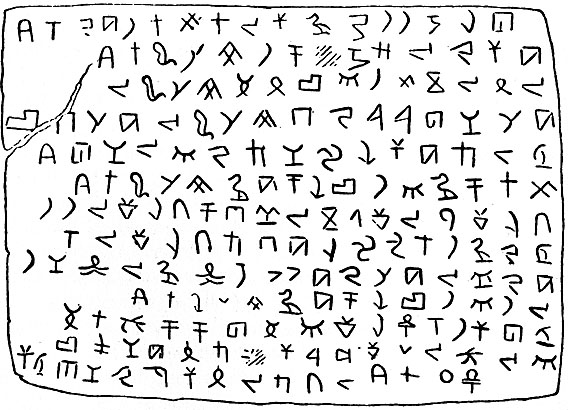
Here is a bronze tablet found in Byblos, dated to around 1700-1900 BC (from E. Doblhofer, Voices in Stone, New York: Vikibg, 1961)

According to Doblhofer, the text reads:
These are the words of Lilu: I have rolled the copper of Tophet.
With a point of iron I have engraved
These objects [or these vases]. The key to
the temple, Ikarrenu has engraved with signs
and he has written its [the temple's] name, Aton-Yahaki:
The crown of orichalc of the altar I have engraved.
This work Lilu has done for the honour of his family ...
I did this in the time of the governor Ipush,
the sixth day of Tammuz
in the seventh year.
Note the way "orichalc" is used as an adornment for the most important element of the temple. To Lilu, having had the honour of engraving the orichalc must have trumped Ikarrenu's engraving of the temple key.
Here is Plato describing the decoration of the temple of Atlantis, using the word "orichalcum" which was a word whose reference he did not know.: "that which is now only a name and was then something more than a name, orichalcum, was dug out of the earth in many parts of the island, being more precious in those days than anything except gold.", and "All the outside of the temple, with the exception of the pinnacles, they covered with silver, and the pinnacles with gold. In the interior of the temple the roof was of ivory, curiously wrought everywhere with gold and silver and orichalcum; and all the other parts, the walls and pillars and floor, they coated with orichalcum."